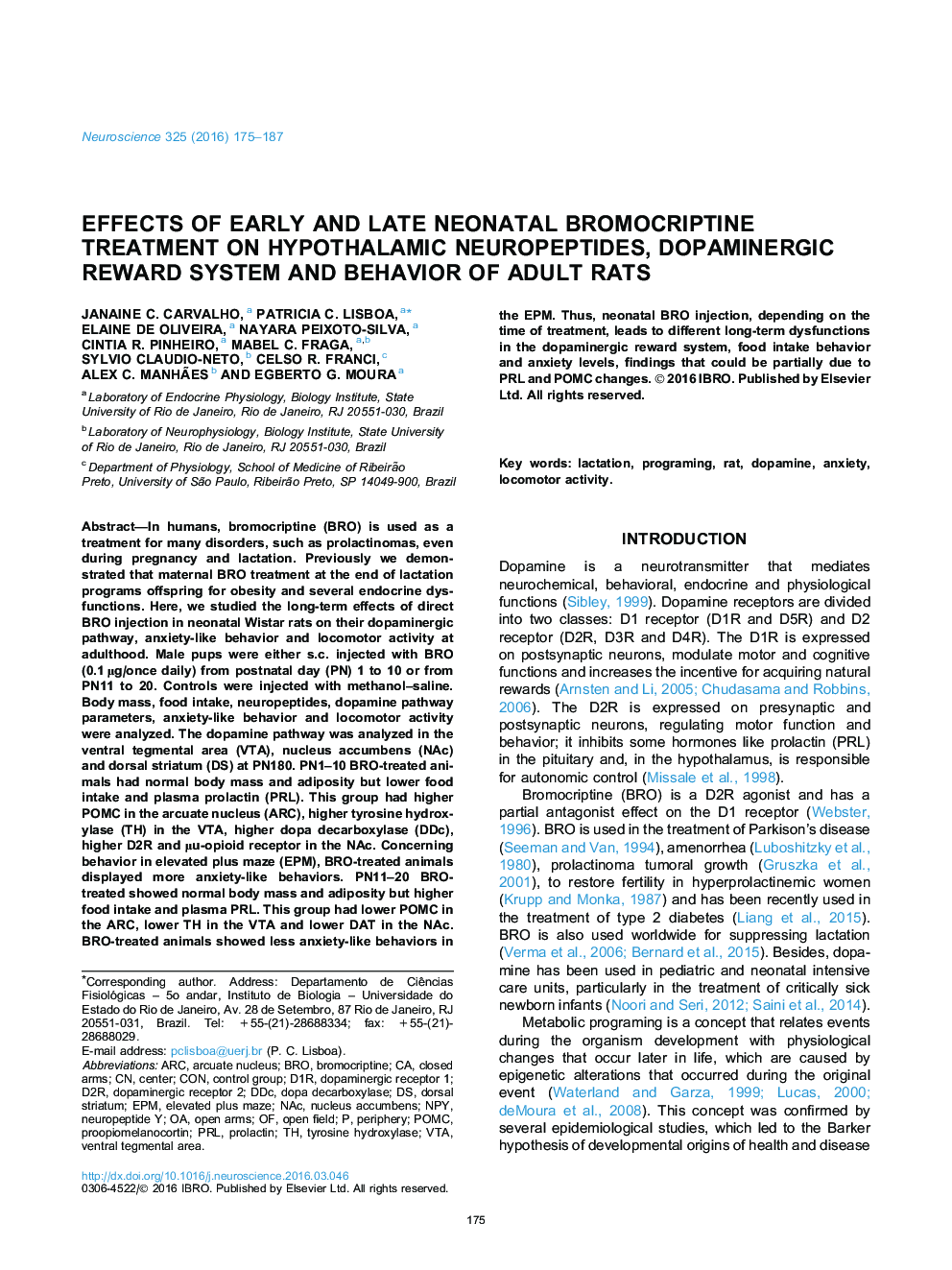| کد مقاله | کد نشریه | سال انتشار | مقاله انگلیسی | نسخه تمام متن |
|---|---|---|---|---|
| 4337351 | 1614751 | 2016 | 13 صفحه PDF | دانلود رایگان |
• Dopamine exposure during lactation has long-lasting influences on the rat dopaminergic pathway.
• Postnatal bromocriptine treatment changes PRL and POMC in adult rats.
• Rats that were bromocriptine-injected during lactation are more susceptible to anxiety-like dysfunction at adulthood.
In humans, bromocriptine (BRO) is used as a treatment for many disorders, such as prolactinomas, even during pregnancy and lactation. Previously we demonstrated that maternal BRO treatment at the end of lactation programs offspring for obesity and several endocrine dysfunctions. Here, we studied the long-term effects of direct BRO injection in neonatal Wistar rats on their dopaminergic pathway, anxiety-like behavior and locomotor activity at adulthood. Male pups were either s.c. injected with BRO (0.1 μg/once daily) from postnatal day (PN) 1 to 10 or from PN11 to 20. Controls were injected with methanol–saline. Body mass, food intake, neuropeptides, dopamine pathway parameters, anxiety-like behavior and locomotor activity were analyzed. The dopamine pathway was analyzed in the ventral tegmental area (VTA), nucleus accumbens (NAc) and dorsal striatum (DS) at PN180. PN1–10 BRO-treated animals had normal body mass and adiposity but lower food intake and plasma prolactin (PRL). This group had higher POMC in the arcuate nucleus (ARC), higher tyrosine hydroxylase (TH) in the VTA, higher dopa decarboxylase (DDc), higher D2R and μu-opioid receptor in the NAc. Concerning behavior in elevated plus maze (EPM), BRO-treated animals displayed more anxiety-like behaviors. PN11–20 BRO-treated showed normal body mass and adiposity but higher food intake and plasma PRL. This group had lower POMC in the ARC, lower TH in the VTA and lower DAT in the NAc. BRO-treated animals showed less anxiety-like behaviors in the EPM. Thus, neonatal BRO injection, depending on the time of treatment, leads to different long-term dysfunctions in the dopaminergic reward system, food intake behavior and anxiety levels, findings that could be partially due to PRL and POMC changes.
Journal: Neuroscience - Volume 325, 14 June 2016, Pages 175–187
